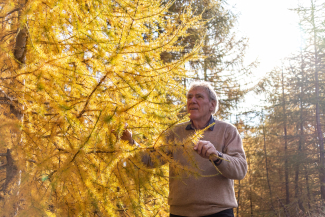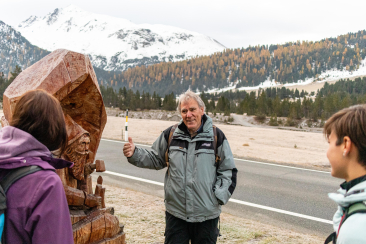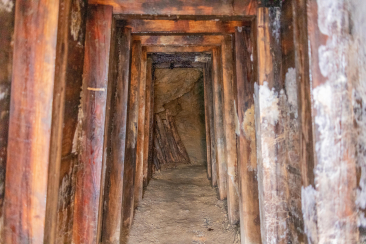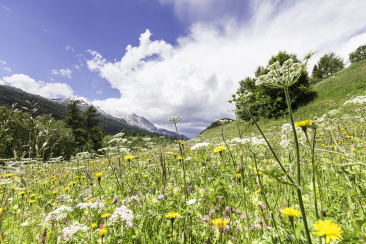How the Ofenpass got its name
Valentin Pitsch
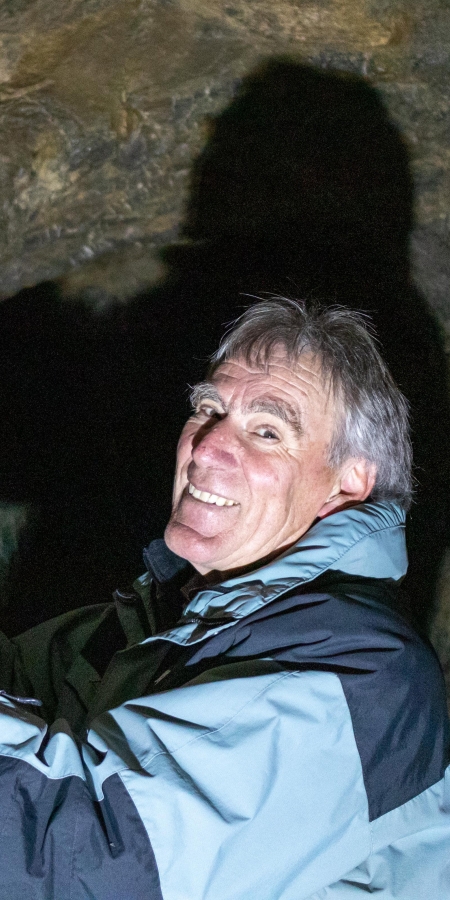
Buffalora – a hotspot
The guided tour with Valentin begins in Buffalora. It is hard to believe that this idyllic plain with a fen, where today there is only an inn and an alp, was once a settlement with around 35 huts. Between the 14th and 18th centuries, workers in the mines and associated trades such as blacksmiths, woodcutters, charcoal burners, transporters and farmers made their living here at the foot of the Ofen Pass. Some remains of this village can still be discovered.
Ascent into another world
The leisurely hike from Buffalora and past the alp to the tunnels takes about 1.5 hours. The former mines are located on a hill in front of the mighty Munt Buffalora. The flora slowly becomes sparser up here, with individual pines and stone pines protruding from the alpine flower meadows and between boulders. In summer, local farmers' cows graze in front of the panorama of the surrounding, often snow-covered mountain peaks. A little further along the trail is the border to the Swiss National Park.
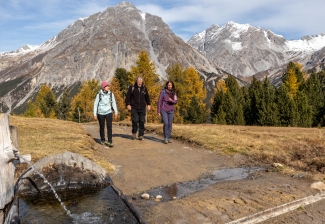
A real back-breaking job
In front of the tunnels, Valentin hands his guests an original lace iron. «You have to imagine that a squire in the mine used seven of these irons every day. Sweaty work!» the tour guide explains. Once the ferrous lumps of rock were picked out, they were smashed and melted in the blast furnace. The pig iron could thus be separated from the rock waste and sold in all directions. The re-melting and cleaning of the raw material as well as the processing into tools, weapons etc. took place elsewhere.
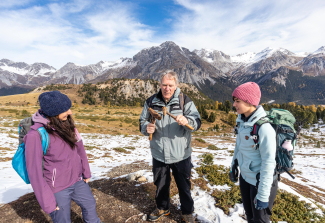
Off to the tunnel!
What you see here in the dim light gives you an idea of how elaborate iron extraction was: centimetre by centimetre, the workers literally cut their way through into the interior of the mountain. The traces of the iron spikes in the rock are still partly visible, and sections of track more than 500 years old have also been preserved. At the moment, three tunnels are accessible. The fourth tunnel, the «Zarcla» tunnel, is currently being restored. Valentin hopes to be able to visit all four mines with his guests soon.
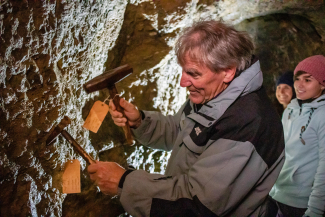
Volunteering underground
The fact that the mines are accessible today is thanks to the association «Amis da las minieras Val Müstair». The president and a few colleagues are regularly at work on a voluntary basis with pickaxe and shovel to penetrate deeper, piece by piece, into the history of the mines in the Ofenpass area. And they are not finished yet: above the tunnels to be visited, they have found a huge mine that extends over eight vertically connected floors. Whatever other exciting things they discover – Valentin Pitsch is sure to enthrall his guests in this world.
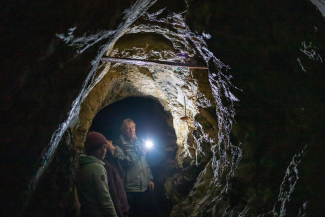
Valentin, the phenologist
Valentin has another passion, which he also documents photographically – the flora of Val Müstair. This has earned him an exciting side job as a phenologist for MeteoSwiss. «I use a checklist to report which plants start to flower, sprout leaves or reach fruiting maturity at specific locations in Lü.» His observations serve climate research, which is based on long data series. «The plant world in Val Müstair fascinates me and I enjoy sharing my knowledge with guests – be it on guided tours or during lectures,» enthuses the amateur biologist and his eyes sparkle.
